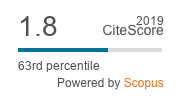Where is the value of cluster associations for SMEs?
Abstract
Purpose: To explore the role played by policies for co-operation and networking, such as cluster initiatives. We empirically examine not only the direct effect of cluster initiatives on firms’ innovation performance, but also potential moderation and mediation effects with regards effort in other internal innovation activities.
Methodology: We analyze the case of the long-running and stable Basque Cluster policy. We built using SABI an extensive sample of 1779 industrial SMEs, 132 of which are members of cluster associations.
Findings: The results show that cluster associates do not have more innovation than non-cluster associates. It also rejects the moderation role of other innovation activities (such as technology management, environmental management or R&D activities). However, the results give support to the mediation role of cluster associations in enhancing the value of innovation activities.
Practical implications: The results presented are relevant both for policy-makers seeking to achieve an optimal mix of ‘general cooperation’ and ‘activity-specific’ policies, as well as for the managers of firms who may accelerate the impacts of their innovation efforts by being members of cooperation networks.
Research limitations: There are two main limitations to the empirical analysis. Firstly, the impossibility of identifying the year in which cluster associates formally register to the cluster association through secondary sources could entail a degree of endogeneity in the direct and moderation models. Secondly, we measure innovation as labour productivity growth, which is acknowledged as only a partial measure of innovation. More generally we acknowledge that evaluations of soft policies such as that reported in this paper should be combined with complementary qualitative analysis.
Originality: Few empirical analyses have been conducted to empirically assess the efficiency of the Basque cluster policy. The research does not support the idea that cluster associates increase innovation per se. However, it reinforces the view that cluster associations can be conceived as a focal network or broker of knowledge. In particular, this could be interpreted in terms of the success of the cluster initiative as a mechanism for generating or demonstrating a certain degree of trust among firms that already engage in innovation activities, supporting in turn benefits from the exchange of their knowledge.
Methodology: We analyze the case of the long-running and stable Basque Cluster policy. We built using SABI an extensive sample of 1779 industrial SMEs, 132 of which are members of cluster associations.
Findings: The results show that cluster associates do not have more innovation than non-cluster associates. It also rejects the moderation role of other innovation activities (such as technology management, environmental management or R&D activities). However, the results give support to the mediation role of cluster associations in enhancing the value of innovation activities.
Practical implications: The results presented are relevant both for policy-makers seeking to achieve an optimal mix of ‘general cooperation’ and ‘activity-specific’ policies, as well as for the managers of firms who may accelerate the impacts of their innovation efforts by being members of cooperation networks.
Research limitations: There are two main limitations to the empirical analysis. Firstly, the impossibility of identifying the year in which cluster associates formally register to the cluster association through secondary sources could entail a degree of endogeneity in the direct and moderation models. Secondly, we measure innovation as labour productivity growth, which is acknowledged as only a partial measure of innovation. More generally we acknowledge that evaluations of soft policies such as that reported in this paper should be combined with complementary qualitative analysis.
Originality: Few empirical analyses have been conducted to empirically assess the efficiency of the Basque cluster policy. The research does not support the idea that cluster associates increase innovation per se. However, it reinforces the view that cluster associations can be conceived as a focal network or broker of knowledge. In particular, this could be interpreted in terms of the success of the cluster initiative as a mechanism for generating or demonstrating a certain degree of trust among firms that already engage in innovation activities, supporting in turn benefits from the exchange of their knowledge.
Keywords
innovation performance, innovation policy, networks, cluster associations, productivity.
DOI: https://doi.org/10.3926/ic.346
This work is licensed under a Creative Commons Attribution 4.0 International License
Intangible Capital, 2004-2024
Online ISSN: 1697-9818; Print ISSN: 2014-3214; DL: B-33375-2004
Publisher: OmniaScience








